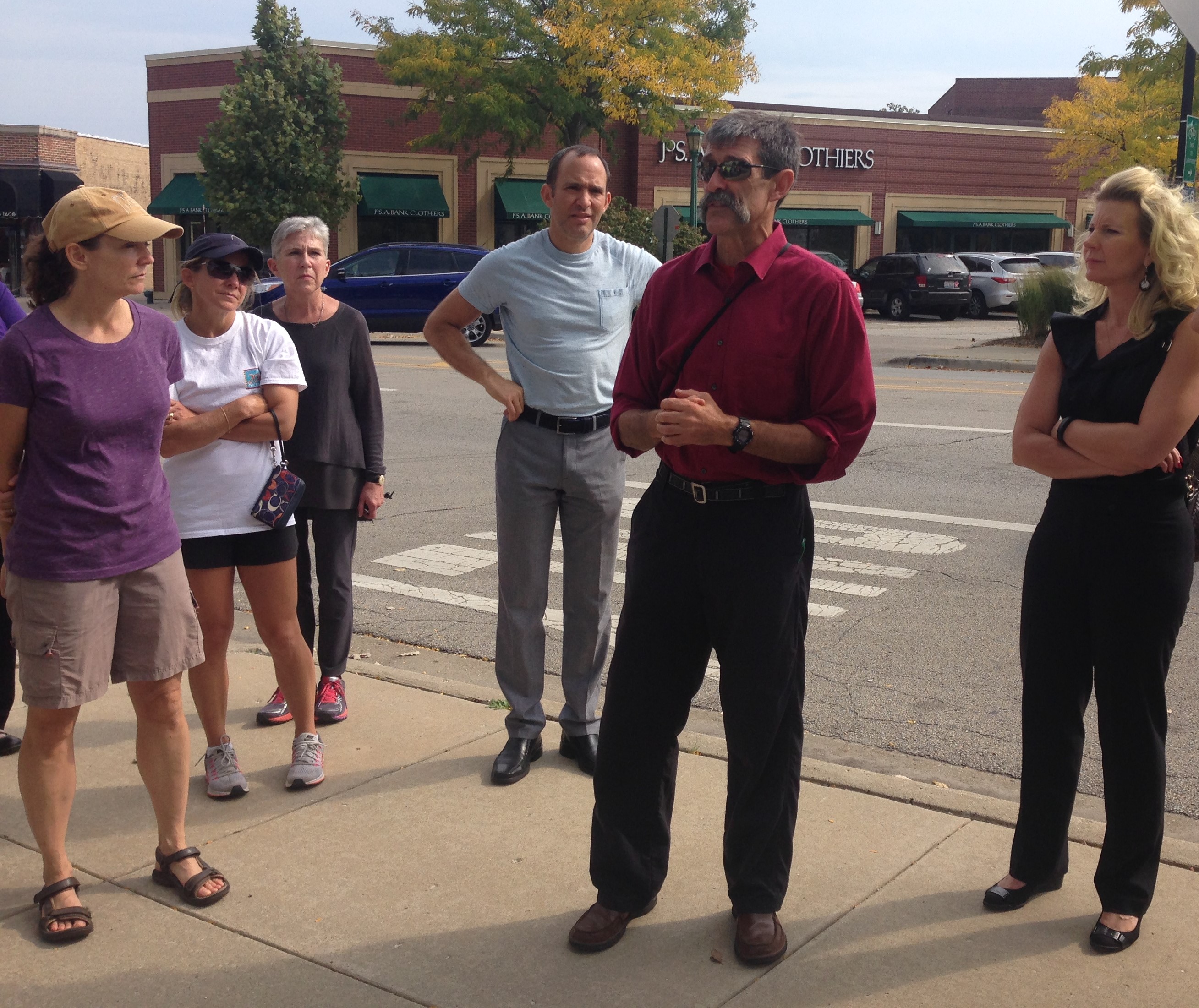Did You Know?
North Shore event focuses on active transportation

Mark Fenton, one of the nation's most well known advocates for creating walkable and bikeable communities, recently spent some time on the North Shore. During a conference presentation and walk audits, he shared many ideas with local leaders and advocates on how to make their communites safer and more welcoming for people walking and biking.
On October 3 through 5, the Consortium of North Suburban Environmental Groups, Go Green Wilmette, and Wilmette Citizens for Active Transportation welcomed Mark Fenton to Chicago’s North Shore.
The 3-day Active by Design Summit was generously sponsored by Illinois Bone and Joint Institute (IBJI). In addition to serving as a national public health, planning and transportation consultant, he's an adjunct associate professor at Tuft’s University and the former host of the “America’s Walking” series on PBS television.
More than 100 people, including many local governmental officials and staff from sixteen North and Northwest suburbs attended the summit’s keynote presentation at the Chicago Botanic Garden. Dr. Eric Chehab, an orthopedic surgeon with IBJI opened the program, noting the important connection between a community’s design and the opportunities it can provide for physical activity.
Mark Fenton’s presentation “Healthy Community Design and the Triple Bottom Line” followed. Fenton (pictured in photo, middle) discussed the safety, health, economic, environmental and social benefits of designing communities that promote physical activity.
The program closed with a panel discussion from five community representatives who showed complete streets enhancements from their hometowns: Evanston, Glencoe, Highland Park, Northfield and Skokie.
Walk audits were conducted in five communities during Mark Fenton’s visit: Skokie, Park Ridge, Highland Park, Wilmette and Glencoe. The walk audits gathered an enthusiastic group of key stakeholders, with a total of about 80 participants.
Each community had a different objective/goal for their walk audit. These goals included:
- Improving pedestrian/bicycle accommodations at the intersection of a high volume roadway and a CTA station.
- Evaluating a community’s bicycle accommodations to coincide with the city’s recently established Bike Planning Task Force.
- Evaluation of the challenges a neighborhood has with the lack of sidewalks, absence of access to a nearby bike path and close proximity to high volume roadway.
- Opportunities to create a Complete Street design for an upcoming reconstruction of a main downtown roadway, and opportunities to improve a bicycle/walking path and roadway intersection.
- Better connect walking/bicycling opportunities across a village’s corridor.
Specific roadway designs that were discussed in many of these communities included curb extensions, back-in-diagonal parking, speed tables, road diets, parklets and count-down timers on stop lights.
A big-take away from the summit and walk audits was Fenton’s encouragement to create “pop-up” designs in our communities.
A pop-up protected bike lane, curb extension or back-in diagonal parking strip would be three such examples. Creating these temporary roadway demonstrations would allow a community to test a design and garner feedback at little financial cost.
At the summit’s conclusion, participants left equipped with new ideas and valuable connections to create healthy community design in their hometowns.
This post was authored by Active by Design Summit organizer, Anne Nagle.
Make a Donation
Your tax-deductible donation supports the important work that Active Trans does throughout the region
